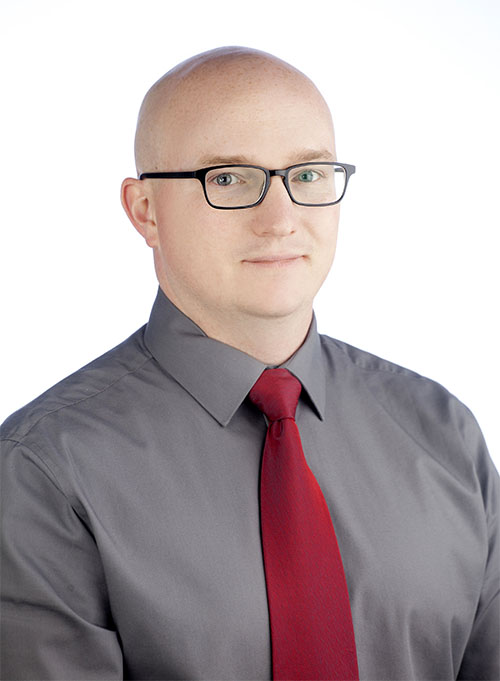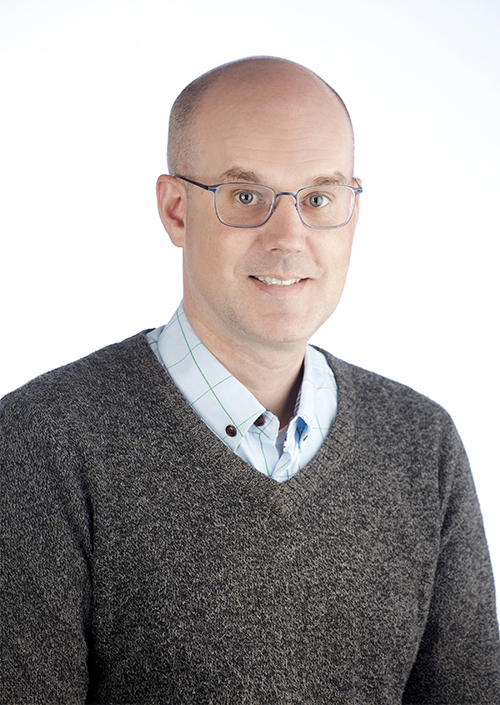I’m excited to bring you another round of graduate spotlights for the next few weeks! We graduated 40 new developers this month and they all have their own unique stories about what brought them to NSS, the things they learned, the capstones they created, and their goals for the future. This week we talk to three alumni from Cohort 21 who all came from careers where they served their community or country.
Brooke Wittenberg
 Brooke Wittenberg was an EMT, but after a career-ending injury, she was looking for something new. She started learning software development by helping her friends with Wordpress websites. She loved the work, but wanted to learn to do more. She explored several bootcamps, but was drawn to NSS’s teaching approach. Additionally, she explained, “John’s ponytail indicted he and NSS are the real deal.” I’m pretty sure sure most of our alumni feel the same way! :) For Brooke, NSS started as a way to learn to do more, but through working on teams and building her capstone projects, she developed a passion for a career in software development.
Brooke Wittenberg was an EMT, but after a career-ending injury, she was looking for something new. She started learning software development by helping her friends with Wordpress websites. She loved the work, but wanted to learn to do more. She explored several bootcamps, but was drawn to NSS’s teaching approach. Additionally, she explained, “John’s ponytail indicted he and NSS are the real deal.” I’m pretty sure sure most of our alumni feel the same way! :) For Brooke, NSS started as a way to learn to do more, but through working on teams and building her capstone projects, she developed a passion for a career in software development.
Going through bootcamp is challenging. Brooke shared, “Early on I felt humbled. It was a different way of learning and it brought me to my knees. I told Brenda (front-end instructor) that I wasn’t sure I would make it. She told me that she knew I would. Her confidence in me made all the difference and helped me to push through.”
While the path to graduation is full of obstacles, it’s also fun! Brooke enjoyed working on teams and seeing the progress they made on each project. She enjoyed using Trello and draw.io to plan projects and her capstones. And she made time for brain breaks and played retro games on classmate Adam White’s Raspberry Pi during lunch.
Brooke’s time as an EMT inspired her front-end capstone, BLS jump-kit. As a EMT she used a lot of software that failed to understand the chaotic environment and pressure EMTs face in emergency situations. BLS jump-kit is an quick and easily accessible app that assists with patient assessment in the field. Brooke wrote the app using the AngularJS framework, and Firebase for the database and deployment.
For her back-end capstone, Brooke pulled from her experience as a wholesale bakery manager where she used management software with an old UI/UX. She created a more user-intuitive ordering system, called dough-e, with Ruby on Rails. She used Cancan gem for user role authorization and Paperclip gem for image upload.
Brooke’s advice for students?
Ask a question until you understand the answer. It’s likely you will find the answer by restating and rethinking the question.
As Brooke works on her job search, she is taking an Intro to Computer Science course (CS50) from Harvard via edX. She is learning React and strengthening the skills she learned at NSS.
Check out Brooke’s portfolio site.
Daniel Babcock
 After his first career in the military, Daniel Babcock chose to go to college and study art. During his education and after graduation, Daniel worked as a security professional. He believed the common misperception that “you need to be a mathematics genius to do coding.” He shared in his podcast interview that he has since learned, “You don’t!” When Daniel found NSS he had already started learning Python on his own. He chose NSS for the in depth, six-month program and he had heard good things about the bootcamps from people in the community.
After his first career in the military, Daniel Babcock chose to go to college and study art. During his education and after graduation, Daniel worked as a security professional. He believed the common misperception that “you need to be a mathematics genius to do coding.” He shared in his podcast interview that he has since learned, “You don’t!” When Daniel found NSS he had already started learning Python on his own. He chose NSS for the in depth, six-month program and he had heard good things about the bootcamps from people in the community.
He encourages upcoming students to “learn the basics of JavaScript thoroughly before school starts.” Our instructors dive right in on day one and completing the pre-work we provide sets students up for success. Daniel mentioned that you’ll still face roadblocks…every day, but it’s all a part of the learning process. He also recommends asking a lot of questions.
For his front-end capstone, Daniel tapped into an experience during art school. On the first day of photography class, many students had these shiny new cameras, but no idea how to work them or how aperture, shutter speed, and ISO work together. He created a web application called Photo Tutor that assists educators in teaching fundamental photography principles to students with limited camera access (or knowledge). The application was built with AngularJS, HTML/CSS, Sass, Bootstrap, Grunt, and Firebase for authentication, data storage, and hosting. He hopes to expand the application to include games and tutorials in the future.
Daniel’s back-end capstone is a practical application for keeping track of your medical history. Medical Records Journal is perfect for individuals who move around a lot and regularly have to provide their medical history. It can be difficult to remember the various illnesses or conditions extended family members have had or the year you had a procedure. He built the app with Ruby on Rails API using SQLite3 for the back-end, and AngularJS, Sass, Bootstrap, and HTML/CSS on the front-end. User login is handled with token-based authentication and task running is handled by Grunt.
Since graduation, Daniel has taught a Photoshop class and started in internship. He’s also exploring and learning more about Python, cyber security, and Blockchain. He plans to build a few new websites and a mobile VPN router. You’ll find him out in the community at local meetups and events!
Listen to Daniel’s interview with Clark Buckner about his capstones and check out Daniel’s portfolio site.
Jeremy Wells
 Jeremy Wells was an English as a Second Language (ESL) teacher for elementary students in Nashville. He has always had an interest in technology and was learning JavaScript on his own. After making some hard decisions, Jeremy made the leap to pursue software development as his next career. He was excited about his future again!
Jeremy Wells was an English as a Second Language (ESL) teacher for elementary students in Nashville. He has always had an interest in technology and was learning JavaScript on his own. After making some hard decisions, Jeremy made the leap to pursue software development as his next career. He was excited about his future again!
Jeremy looked at several options to learn software development and eventually chose NSS for the longer, more in-depth, full stack bootcamp. He was also attracted to the opportunity for teamwork and the NSS community, something he wouldn’t get if he was learning software development on his own.
There were roadblocks along way.
Any time we moved onto a new module in the program, wrapping my head around the new concepts was challenging and took some time to work through. I remember first encountering IIFEs, MVC frameworks, and database design and struggling to understand them at the outset, but with time and hands-on problem-solving, they started to make sense.
Jeremy loved working on teams with his classmates. They each brought a range of prior experiences that they could pull from as a team. He also enjoyed looking back throughout the program and remember just how much he’s learned.
Students are encouraged to draw from their prior experiences when deciding on a capstone. For his front-end capstone, Jeremy build an app called Scoring. It allows a team of teachers to store and access the results of teacher-made assessment tests. Teachers can easily store, visualize, and discuss the data. Jeremy shared the tools he used in the app, “I used AngularJS as the MVC framework and stored the data using Firebase. I also learned how to use methods from the D3.js library to build charts that illustrated assessment results.” You can experience his demo version at jeremywells.io/scoring.
His back-end capstones is also great for the classroom. LivePolling allows a presenter, or teacher, to conduct polls with their audience/class in real time. The audience can access the poll with a short URL or a QR code from any device and answer the multiple choice questions. The results are updated and charted live. Jeremy used AngularJS, Bootstrap, and Sass for the user interface and D3.js for the charts. The API was built with Ruby on Rails. He also created websocket connections with Rails Action Cable to allow devices to stream data back and forth rather than the data coming in as isolated server requests.
“My advice to anyone committing to this program is to immerse yourself as much as possible in the software community: meetups, hackathons, alumni conversations,” encourages Jeremy. “You will benefit in many ways from the connections that can be made with other developers.”
Jeremy is currently working hard on his job search, working through tutorials to strengthen his understanding of Ruby on Rails, and creating a blogging app. You’ll also find him out in the community as a variety of meetups.
Listen to Jeremy’s interview with Clark Buckner about his journey with NSS and check out Jeremy’s portfolio site.
Be sure to listen to all of the graduates talk to our friend, Clark Buckner, about their journey into development and about their experience at NSS.
Check out all of the recent grads on Cohort 21’s class website.







